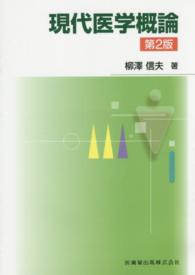- ホーム
- > 洋書
- > 英文書
- > Business / Economics
Full Description
Tax avoidance is an area of law that changes frequently, and is subject to close scrutiny. Tax practitioners are expected to understand the legislative and regulatory frameworks that apply, so as to recognise their obligations, and the obligations of their clients to behave responsibility. This book focuses on the ways in which tax avoidance has been combated in the UK.
The concept of "tax avoidance", and how it has been developed in legislation and case law, is clearly explained. The author also provides practical guidance with regard to the application of the supply side measures (from DOTAS (Disclosure of Tax Avoidance Schemes) to POTAS (Promoters of Tax Avoidance Schemes).
The first part of the book looks primarily at the relevant legal developments, highlighting the relevant cases throughout. Part Two covers the supply side measures that have been introduced, from DOTAS onwards, including the penalty regime, with the aim of seeking to dissuade individuals and businesses from engaging in tax avoidance practices. The measures applying to both indirect and direct taxes are covered.
This authoritative title will help advisers to avoid falling foul of these regulations and ensure that their reputation as a provider of tax advice remains 'clean'.
Contents
PART ONE: What is tax avoidance?
Chapter 1 Introduction
Chapter 2 Tax Avoidance
What is tax avoidance?
Analysis of the concepts of (a) "tax evasion" and "sham transactions"; (b) "tax avoidance"; and (c) "tax mitigation"
Measuring the "tax gap"
Chapter 3: the domestic jurisprudence; 50 years from Rossminster to Rangers
1970s: respect for legal facts created by the parties (IRC v Duke of Westminster)
1980s: composite transactions
- Ramsay
- Extending Ramsay: Furniss v Dawson
- Limits on Ramsay (Craven v White)
1990s:
- Emergence of a purposive approach (McGuickian)
2000s:
- Distinction between "commercial" v "legal" concepts (MacNiven v Westmoreland)
- Purposive construction or a judicial anti-avoidance rule?
- Development and refinement of the purposive approach (and the end of Ramsay as a special theory?) (BMBF)
2010s:
- construe purposively the statutory provisions and the relevant facts viewed realistically (Icebreaker, Rangers)
2020s
Can taxpayers rely on a purposive interpretation of statute? (Whittles v Uniholdings, Trigg)
Chapter 4: the EU approach
Doctrine of abuse of rights (Emsland-Starke, Centros)
Developments in VAT (Halifax)
Approach in direct tax
o Wholly artificial arrangements (ICI v Colmer)
o (Cadbury Schweppes)
Anti-Tax Avoidance Directive
Chapter 5: Methods of legislative control
Retrospective legislation
TAARs
Transactions in securities (ss.682 to 686, ITA 2007)
Diverted Profits Tax
GAAR
The Loan Charge
Penalties
Publicity and morality
PART 2 From DOTAS to POTAS looks at the supply side measures that have been introduced, particularly since 2000.
Chapter 6: Disclosure of Tax Avoidance Schemes
Direct taxes
National Insurance Contributions
VAT
Key concepts, including "tax advantage", "promoter" and "hallmarks"
Penalties
Information powers
EU's DAC 6 Directive
Chapter 7: The Regulatory Codes
Banking Code of Conduct
PCRT
Solicitors Code of Conduct
Chapter 8: APNs
Chapter 9: Follower Notices
Chapter 10: POTAS
Chapter 11: Serial Tax Avoiders
Chapter 12: Appeals and Judicial Review








